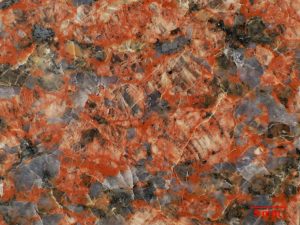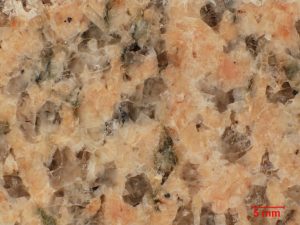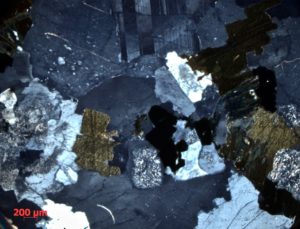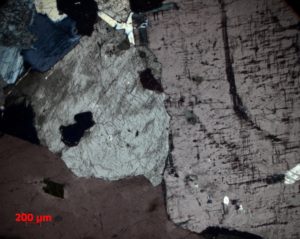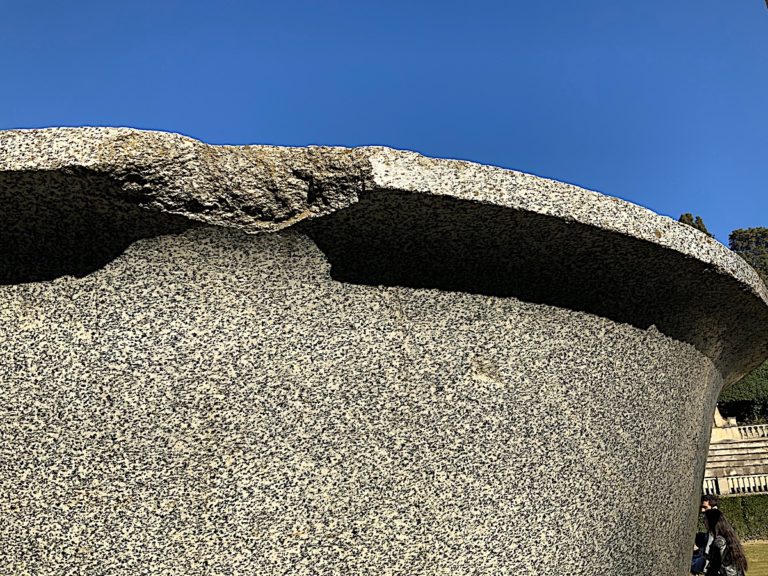
Lithotype
Granite
Common names
Granito dell'Elba, Granitello antico
Rock classification
Igneous rock
The granitic rock (s.l.) used in Firenze comes from different localities but, in particular, from different quarries (Mt. Capanne, Pomonte, Cavoli, Sant’Ilario, San Piero, etc.) in the Elba Island (Tuscany). Elban granitic rocks are known and used from prehistory; they were employed during the Etruscan times for artifacts, weapons, tombs and defensive constructions. With the Romans, particularly during the Imperial time, these rocks were used for big constructions and the exportation in the more important cities of the Empire.
Granite is a very common type of intrusive igneous rock which represents one of the main component of continental crust; much of it was intruded during the Precambrian age. It derives from the crystallization of magma within the crust where it is well insulated. The equivalent (with a similar composition) volcanic rock is known as rhyolite. The terms “granitic” and “granitoid” mean granite-like and are applied to a wide group of intrusive igneous rocks with similar textures and slight variations in composition which are not granite s.s..
The word “granite” comes from the latin granum = grain, in reference to the coarse-grained structure of such a holocrystalline rock. Due to its high hardness and durability it has gained widespread use throughout the human history as a construction stone, a very good material to prepare aggregate, for interior and exterior cladding and several other purposes. Granite and granitic rocks (s.l.) have been little used in Firenze; they are found in some columns (e.g. Colonne di Santa Felicita and Giustizia) and in other artifacts like some tubs in the Giardino di Boboli.
Granite s.s. is a holocrystalline igneous rock with between 20% and 60% quartz by volume and at least 35% of the total feldspar consisting of alkali feldspar; femic minerals (Fe and Mg-rich) as micas (mainly biotite) and amphiboles (commonly hornblende) are also present together with accessory amounts of cordierite, granato, apatite, titanite, zircone, allanite e magnetite. Granitic rocks or granitoids are rocks displaying quartz content in the same range but with a variable ratio of feldspars. Some granites or granite-like rocks may contain pyroxene or even olivine.
Macroscopic description
Granite is nearly always massive (lacking any internal structures), and white, pink, red or gray in color, depending on its mineralogy. It is a generally equigranular coarse-grained rock with average grain size ranging from 1 to 25 millimeters. Granite that crystallized in a narrow body (dike) may be fine-grained because the heat is rapidly lost to the adjacent rocks.
Microscopic description
The rock displays a holocrystalline (consisting entirely of crystals), generally equigranular, faneritic (crystals can be observed to the naked eye) texture. Crystals appear strictly in contact with each other. Quartz is tipically anhedral and colorless, feldspar shows regular, well-developed faces. In some cases, granite also tends to have coarse intergrowths of feldspars and quartz that form a graphic texture.
